QuestionHi there! We bought our 5 year old son a 5 gallon tank for Christmas. It has a whisper filter. We set the tank up w/ water and ran it for 24 -48 hrs. before we added a beta and a snail. The pet store told us that we could add a few fish in about a week's time. The beta seemed to do well, however never seemed very hungry. After a week we bought a dalmation mollie and three small lemon tetras. All seemed to be doing well for a few days and then the beta started to go down hill. He seemed to be losing his fins, hiding, etc. We thought the other fish were eatting at him. However, he quickly developed white fuzzy spots and lost color. (During this entire time we were doing daily water changes) My husband took the fish to the pet store and they said he had some disease, we bought meds, but he succumbed. My son was quite upset by this, and wanted to return the other fish and just get a new beta...which we did, along w/ a "sucker fish" The new beta seemed ok for one day, and then lost color, acted strangly, and seemed to again have white spots (w/in 24 hrs). He is now dead too. We have had a bulb over the tank during the day, but not at night. BTW the snail has and sucker fish seem fine. Should we just keep those two in there for a few weeks before we get "someone" new? Any good suggestions for fish that will be "easy" care for us, as we are just starting out on this fish journey! Thanks in advance.
AnswerHi Andrea;
The water may be too cool for bettas. Does the tank have a heater? Bettas need 78 degrees or higher all the time. You might also want to try another store for your fish. Some just don't care for them well enough and are weak, or they have disease that has spread to all their bettas.
Some sucker fish are quite aggressive and attack other fish at night. Do you remember what he was called? Is he smooth and thin or is he rough skinned?
It is a pretty small tank for anything more than a bottom feeder, snail and a betta. The safe maximum population in a community tank is one inch of adult fish per gallon. Snails might seem like good cleaners and many people are told that they don't count in the population because they clean. This is not true at all because snails are very messy little critters. Basically they are "poop machines"! They want more and more food all the time and just keep making more waste as they grow. Neat creatures, but not efficient cleaners. So, your betta counts as about 2 inches and the snail as an inch. The sucker has to be added to that too.
Your main problem is from "New Tank Syndrome". Contrary to what the fish store said, you can only have one small fish in there for the first 6 to 8 weeks. Don't add any more fish until it has been set up with fish in it for that long. Here is my article about that;
**********
New Tank Syndrome or Break-in Period
So you have a new tank and you filled it up, put the filter together, mounted the heater into place and turned on the lights. You have all the plants and decorations where you want them....
You are ready for fish.
But, your filter is not ready for a full tank of fish yet.
The filter is running and moving the water and cleaning out crud, right? Of course!
But a very important part of your filter is the part you can't see. An aquarium filter removes the larger visible stuff, but it also must remove the dissolved fish waste that turns into ammonia in the water. To do this, special bacteria must grow in the filter system and on the particles of gravel in the bottom of your tank. This process occurs even on a limited scale in little fish bowls that have no filter in them.
This is "New-Tank Syndrome" or the "Break-in Period". The entire process takes 6 to 8 weeks to complete because these "nitrifying" bacteria grow quite slowly.
Start off with only one or two hardy fish (no more than 2 total inches of fish) for every ten gallons of water and don't add more until the 6 to 8 weeks has gone by. Hard to be patient, but it is worth it to keep your fish alive and healthy. As a matter of fact, the bacteria cannot develop without fish in the tank. You can let that tank sit forever without fish in it, but as soon as the first fish goes in the process begins. Avoid changing the filter pads during break-in. This removes the bacterial colonies that are essential to a balanced aquarium. You can rinse the filter pad out in a container of aquarium water. This will preserve most of the bacteria colonies while still allowing your filter to flow freely. Even using bacteria additives and water conditioners when you first set up the tank will not make a tank begin the cycle by itself. If there are no fish to provide food (fish waste) for the bacteria, the beneficial bacteria cultures will die and you will have to start the colonies all over again once fish are added to the tank. Once the tank has completed the initial cycle, you can change the filter pads every 4 weeks or so. But for now, just rinse them.
Feed your new fish VERY lightly. Any excess food will cause additional waste your system cannot afford to have right now. If you see food floating around or lying on the plants and gravel after five minutes, too much food is going into the tank. Cut back a little each time you feed until it is ALL gone 5 minutes after you feed them. Feed them once a day.
During this "break-in period" your tank will become cloudy and milky looking. You may have to tolerate this for the entire break-in period but it is only temporary. Changing 25% of the water three times a week until the break-in period is over helps a great deal. Changing water reduces the ammonia and nitrites that rise while the bacteria continues to multiply. If ammonia and/or nitrites become too high, your fish will become stressed and possibly die. Use a good water conditioner when you replace the water and make sure it is the right temperature to avoid shocking your fish.
When the break-in is over after 6 to 8 weeks and there are no nitrites or ammonia present in the water you can slowly add more fish. Add one or two every week until you reach the desired population. This allows the bacteria to adjust to the new population every time before adding more. Monitor the nitrites and ammonia to be sure they don't come up. If they do, make a 25% water change and check them again. Don't add the next fish until the levels are down again.
The safe maximum population for any size tank is one inch of adult fish for every gallon of water in the tank. Do some research to be sure of the fish you are interested in. Even though they are small when you buy them, you have to base your population calculations on full-sized adult fish. Many hobbyists have up to two inches per gallon but this can be risky. If a water quality issue arises or a disease occurs it will spread fast and furious in an over-populated tank. In any case, 25% water changes every week to two weeks are absolutely essential for the health of your fish.
Following these guidelines will help you get your new tank on the right track.
**********
Followups Welcome
At Your Service;
Chris Robbins
Come on over and join us on the freshwater fish forum at About.com to get even more information too;
http://freshaquarium.about.com/od/questionsanswers/a/naavigateforum.htm
My member name is ChrisR62. See You There!

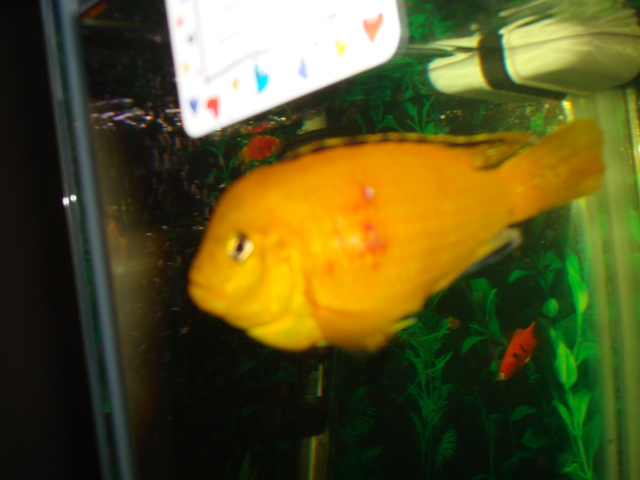 Biggie
Question
biggie
I have had these fish four about 3 year
Biggie
Question
biggie
I have had these fish four about 3 year
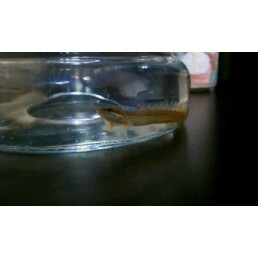 dyno fish
Questioni thinks its called a
QUESTION: i just
dyno fish
Questioni thinks its called a
QUESTION: i just
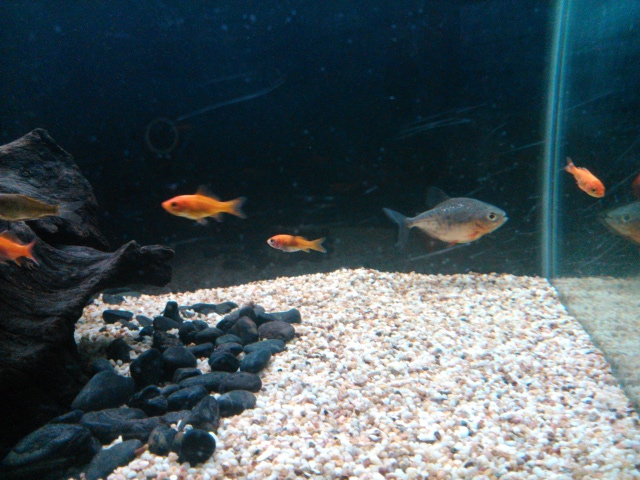 Carnivorous Top Dwellers
Question
This is the Pacu This is the Snakehead,
Carnivorous Top Dwellers
Question
This is the Pacu This is the Snakehead,
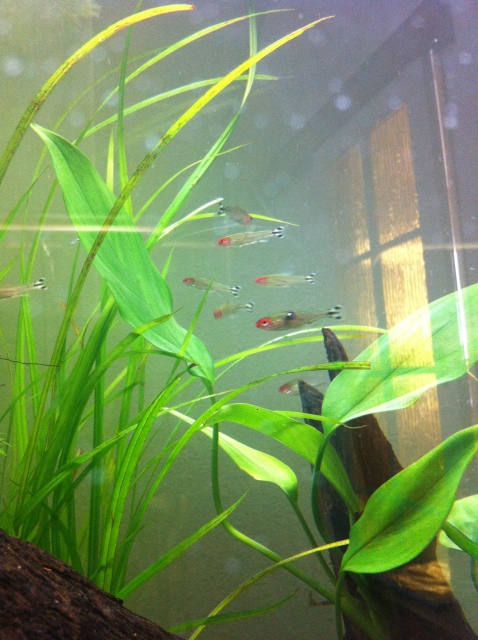 black mark on a rummy nose tetra
Questionsick rummynose
QUESTION: Hi there,
I ho
black mark on a rummy nose tetra
Questionsick rummynose
QUESTION: Hi there,
I ho
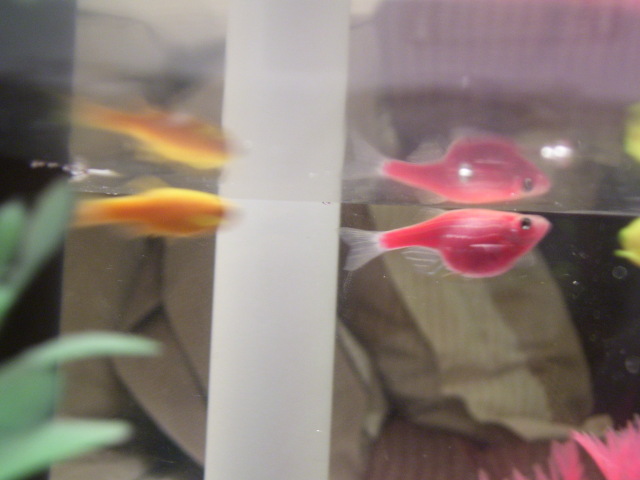 Zebra Danios (GloFish)
Question
Picture
I have several pet glofish (http://www
Zebra Danios (GloFish)
Question
Picture
I have several pet glofish (http://www